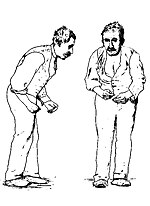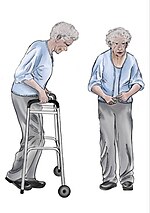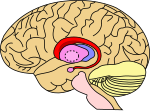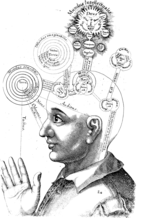Search results
Appearance
The page "Motor verbal hallucination" does not exist. You can create a draft and submit it for review or request that a redirect be created, but consider checking the search results below to see whether the topic is already covered.
- J.; Diederen, K. M.; Blom, J. D. (2010). "Dissecting auditory verbal hallucinations into two components: Audibility (gedankenlautwerden) and alienation...17 KB (2,199 words) - 09:21, 6 July 2024
- for treating motor symptoms in DLB. Neuropsychiatric symptoms of DLB (aggression, anxiety, apathy, delusions, depression and hallucinations) do not always...136 KB (14,528 words) - 00:36, 9 October 2024
- Glossary of psychiatry (redirect from Extracampine hallucination)alternate term for this is somaesthetic aura. Also see § Lilliputian hallucinations Literally, this term means "not having words". The term may refer to...64 KB (7,608 words) - 05:43, 14 October 2024
- Auditory imagery (section Verbal)modalities such as verbal imagery or musical imagery. This modality of mental imagery differs from other sensory images such as motor imagery or visual...21 KB (2,972 words) - 21:01, 12 September 2023
- Psychosis (section Hallucinations)research in 2007 that focused on quantifying self-reports of auditory verbal hallucinations (AVH) in persons with psychosis, suggest that The Hamilton Program...133 KB (14,936 words) - 16:39, 13 October 2024
- Parkinson's disease (redirect from Motor symptoms of Parkinson's disease)Lewy body dementia involves motor symptoms with early onset of cognitive dysfunction and hallucinations which precede motor symptoms. Alternatively, multiple...173 KB (18,900 words) - 03:31, 12 October 2024
- disease are varied. Parkinson's disease affects movement, producing motor symptoms. Non-motor symptoms, which include dysautonomia, cognitive and neurobehavioral...30 KB (3,420 words) - 00:04, 20 July 2024
- anopsia) Complex hallucinations (smell, sound, vision, memory) Receptive aphasia Wernicke's aphasia Anomic aphasia Dyslexia Impaired verbal memory Word agnosia...19 KB (1,891 words) - 13:53, 8 October 2024
- A., & vant Wout, M. (2004). Subvocalization in auditory-verbal imagery: Just a form of motor imagery? Cognitive Processing, 5(4), 228-231. Pitt, M. A...29 KB (3,728 words) - 21:39, 4 May 2024
- When in sleep paralysis, people may also experience hallucinations. Although said hallucinations cannot cause physical damage, they may still be frightening...52 KB (5,970 words) - 23:53, 15 September 2024
- Thought disorder (redirect from Disorder of verbal cognition)DSM-5 includes delusions, hallucinations, disorganized thought process (formal thought disorder), and disorganized or abnormal motor behavior (including catatonia)...76 KB (8,780 words) - 13:06, 24 September 2024
- Efference copy (category Motor control)the basis for inner speech, especially in relation to auditory verbal hallucinations. In the case of inner speech, the efference signal is not sent or...25 KB (3,176 words) - 12:35, 19 September 2024
- Seizure types (section Motor seizures)aphasia, dysphasia, anomia), memory impairments (deja vu, jamais vu), hallucinations, persistent thought (forced thinking), and neglect. Autonomic seizures...24 KB (2,119 words) - 04:27, 2 September 2024
- forty-five minutes to complete. The items usually consist of motor tasks and cognitive tasks with the motor tasks being easier to complete. The average score is...13 KB (1,439 words) - 10:30, 29 February 2024
- Dream (section Hallucination)areas. A hallucination, in the broadest sense of the word, is a perception in the absence of a stimulus. In a stricter sense, hallucinations are perceptions...77 KB (8,863 words) - 12:21, 7 October 2024
- Caudate nucleus (section Motor functions)to the caudate nucleus. Abulia is defined as decreased spontaneous verbal and motor activity and slowness, with symptoms including apathy, disinterest...66 KB (7,667 words) - 04:44, 1 October 2024
- Consciousness (section Measurement via verbal report)in this group can produce major distortions of perception, including hallucinations; some users even describe their drug-induced experiences as mystical...160 KB (18,779 words) - 14:45, 9 October 2024
- are field defects and scotomas, movement and colour discrimination, hallucinations, illusions, inability to recognize words and inability to recognize...26 KB (3,434 words) - 01:01, 16 December 2023
- through a linguistic control mechanism and experienced as auditory verbal hallucinations. Bicameral mentality is nonconscious in its inability to reason...48 KB (5,801 words) - 02:40, 5 October 2024
- the psychotic symptoms seen in childhood schizophrenia, non-verbal auditory hallucinations are the most common, and include noises such as shots, knocks...49 KB (5,997 words) - 19:58, 18 September 2024
- Encyclopædia Britannica, Volume 12 Hallucination 26232331911 Encyclopædia Britannica, Volume 12 — Hallucination HALLUCINATION (from Lat. alucinari or allucinari
- a noted nineteenth-century authority, commented that "Retroactive hallucinations are of great importance in law. They can be used to falsify testimony
- attachments to animate or inanimate objects. Absence of delusions, hallucinations, loosening of associations, and incoherence as in Schizophrenia. At









